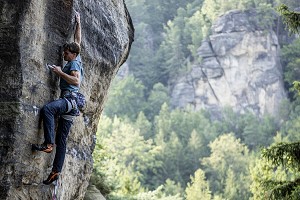
When I tried to emerge from my climbing hibernation once our children had started walking I turned my thoughts to making my climbing interest a truly family activity. Of course that required more kit, this time in the form of children’s climbing harnesses, but which harness would be best? There were no shops near us that stocked more than one design, my efforts at finding any comparisons or making them myself from the information available on the internet didn’t seem very reliable to me and so my purchase trusted to luck as much as anything else. In a brave moment of creativity though I thought I’d contribute a review of a number of different harnesses to assist anyone making the same decision.
I rustled up about eight children from three to nine years old to try on and try out five harnesses from Camp, Edelrid, Wild Country, DMM and Petzl. Some children were merely suspended from an apple tree in the garden (to their great amusement) and asked to comment on issues such as comfort with varying degrees of usefulness, others (my own) went through a more rigorous process of trying on, and retrying on, photographing, climbing on the wall, hanging and lowering. It would be fair to say that the process would not meet the scrutiny of a proper scientist though the views I’ve reached should be useful to the parent of a prospective climber. The children have all survived the process with a desire to climb a rock face ‘as big as the house’, which is fortunate.
All the harnesses are full body harnesses since that is necessary for the smaller child whose hips and legs are narrow with little of a waist to retain them upside down. Children up to say five have a dazzling ability to wriggle, squirm and change shape such that even tightening them into a harness doesn’t mean it will stay on. For these the design of the harness made a real difference requiring straps across the chest and shoulder pads or shoulder straps that could be adjusted to keep the children properly strapped in.
General Notes on all of these harnesses:
Sizing
Probably the most important information when choosing a children’s harness, especially if it is not possible to try it on, is what size of child it is likely to fit. The size information provided by the manufacturers is difficult to compare, and often not very useful for gauging whether a particular harness will fit a small child or how much it will expand as the child grows taller. From my experiments with a range of children of different ages and shapes it was only the length of the torso that determined whether a harness would fit well or not, variations in leg circumference or waist didn’t really factor.
As a rough measure the harnesses will fit children with the following length of torso (measured from the seat to the highest point of the shoulder straps with the child sat down):
- Edelrid Fraggle: 45-55cm
- DMM Tomkitten: 45-70cm
- Petzl Simba: 45-70cm
- Camp Bambino: 50-70cm
- Wild Country Vision Kidz: 50-70cm
At their smallest sizes, the location of the tie in point up the torso differs between the harnesses more than when the harnesses are expanded for a larger child. I thought the higher tie in points when the harnesses have been shrunk would result in the rope and knot getting in the face of the child, but this never seemed to be a problem – the moment the rope is tensioned the child hangs back out of the way with ease. The lowest tie in points (but still far above the waist) are on the Tomkitten, Simba and Bambino, the highest tie in point is on the Vision Kidz and that of the Fraggle is somewhere in between.
In the interests of completeness, here are the manufacturers’ published size parameters:
Camp Bambino: Max Chest 86cm, 34”; Max Leg 64cm, 25”. Weight 365g, 12.9 oz.
Edelrid Fraggle: Torso 50-70cm, 19.7-27.6”; Legs max 37cm, 15”. Weight 305g
DMM Tomkitten: Waist 30-62cm, 19-24”; Leg 23-55cm, 9-22”. Weight 330g
Petzl Simba: Max Leg Loop 51cm; Torso length 45-60cm; Age 4-9yrs. Weight 350g
Wild Country Vision Kidz: Waist 58-74cm, 23-29”; Leg 46-56 cm, 18-22”; Age 4-10yrs. Weight 323gms, 11.4oz.
Colours and comfort
Several of the harnesses use colour schemes and pictures that add to the impression that these are children’s harnesses and these might make it easier or more fun to get the child into the harness for the first time, but they are unlikely to make the difference to successfully introducing your child to the wonders of climbing. As to comfort, all the harnesses that have padding permit the padding to be moved around on the straps they protect so it should be possible to make them comfortable. The other harnesses have differing widths of webbing which might be less comfortable to a heavier adult, but I doubt the lower pressures applied by a child would be uncomfortable to them, and more so where worn over clothes.
The Harnesses:
Edelrid Fraggle (More info on Edelrid Website) RRP £50
The Fraggle’s design is furthest from that of conventional harnesses, it seems to be designed from scratch for the specific shapes and dynamics of a child’s body rather than being an adaptation of an adult full body harness, and its performance is correspondingly impressive.
The one–piece padded shoulder yoke seemed to fit well every child who tried it on (it was too small for anyone over six). The real advantage of this is that it is obvious whether it is adjusted properly to fit the child and it prevents the shoulder straps slipping off the shoulders, which only the Tomkitten and Bambino achieved effectively. At the back of the shoulder yoke is a second ‘belay’ loop rated as “NO PPE! 500kg MAX.” – I couldn’t find a child or circumstances in which I might exert that weight to the loop so suspended a number of children by the back rather than the front, purely for their own entertainment: the loop worked best as the means of assisting a 3 year old to fly around the house with right arm outstretched like a superhero. Some proper uses would be to secure a child learning to ski (as mentioned on Edelrid’s website), to keep a child facing the rock for their safety or just to assist by pulling them from behind so as not to rotate sideways or if you think the weight of a small child may not of itself be enough to overcome the friction in a top rope system and you might want to pull them down.
The other very useful characteristic for small children is the (non-weight bearing) snap buckled strap across the chest effectively keeping the harness in place when not tied to the rope. Only the Tomkitten also has this and in my experience the strap was essential if harnesses were not to fall off as the smaller kids run around.
The straps on the harness are supple, it is the most simple of the harnesses to put on and it is easy to adjust to fit. The leg loops do not adjust for size (though the padding can be moved around the loop to the best position for comfort) but this doesn’t affect the effectiveness of the harness even with a small child. The system for adjustment basically only alters the size of the loops going over each shoulder, but establishing how it operated (which was unnecessary) required some delving into the internals of the shoulder yoke: one webbing strap at the back comes up from left through a metal piece in the yoke and back down to the right where the buckle is, with the other strap coming from one side at the front, over the shoulder through the metal piece and back over the other shoulder to another buckle at the front. The metal piece in the yoke also has the rear ‘belay’ loop attached to it, and the location of the shoulder pad is adjustable front to back by adjusting either back or front strap and sliding the shoulder yoke over the straps to get symmetry.
My only negative observation is that it does not expand to the same larger sizes of the other harnesses. The size I used was XXS and another size XS is available though Edelrid’s website does not give the dimensions and the figures printed on the harness’ label seemed too large so aren’t reliable (the figures are for a torso of 50-70cm which could well be the size range of a slightly larger harness, perhaps the real XS)
DMM Tomkitten (More info on DMM Website) RRP: £50
The Tomkitten worked best as a harness that could fit the full range of available children, did not slip off the shoulder when not tied to a rope and was easy to get on and adjust to fit. DMM’s website say they tweaked the design to give a comfortable fit over a large range of body sizes and its design does seem carefully thought out.
There is much more to adjust on the Tomkitten than on the Fraggle with two adjustable leg loops each with its own movable pad, a non-load bearing chest strap, two adjustable shoulder straps and a movable piece of leather-type fabric where the shoulder straps cross in the middle of the back – this can be adjusted to be high up the back which keeps the shoulder straps always on the shoulders. It is easy to step into, simple to adjust and stays on when not tied to a rope. There is half a waist belt crossing the back kept taught(ish) by elastic: neither the Fraggle nor the Simba have a waist strap of any sort, and in use it seemed superfluous except that it would reduce the chance of a failure where a hanging child might slip out bum first with the arm and leg straps riding up the limbs. I was surprised by how flexible children actually are and keeping them in a harness is not as straightforward as for an adult – even with the straps on any harness seemingly done up tight they can easily morph into a shape that makes the effort to tighten the straps look hopeless.
The harness has one gear loop (none of the other harnesses have one) which might prove useful for older children say who are belaying, and it is a feature that makes the harness more interesting to play in (as is the Fraggle’s superhero loop).
Its negatives are merely that it does not have the neatness and cleverness of the Fraggle’s design, being a little more complicated to fit. Its counter points are that it is more adjustable and will fit significantly taller children.
Petzl Simba (More info on Petzl Website) RRP: £42.99
The Simba is a simple design that is easy to adjust to fit. Its design is so straightforward that I found a number of children having got into it unaided, which was never going to be the case with most of the harnesses.
The basic structure of the harness is two broad webbing adjustable leg loops joined to two narrower adjustable shoulder straps each with a loop of rope at the front as the tie in points. The webbing is supple, has pictures of mice and holey cheese on it, and no one found it uncomfortable despite not having the padding found on some of the other harnesses, though if shorts are worn that might be different. Comparing the design of the range of harnesses the Simba might fit as a previous generation to the Fraggle, with the other harnesses being much more complex at achieving the same function.
The one real negative observation is that on smaller children the shoulder straps are likely to slip off when not tied into the rope as the harness has neither a strap across the chest nor an adjustable shoulder arrangement – the straps are sewn together where they cross at the back preventing any adjustment, unlike with the Tomkitten. Of course this harness is designed for older children, Petzl also make their Ouistiti harness for smaller children which has straps behind the chest and elastic to pull the top of the shoulders together (the Ouistiti is supposed to be for children of 4 to 9 years old and up to 30kg whereas the Simba is for children 5 to 10 years old and up to 40 kg).
CAMP Bambino (more info on CAMP website) RRP: £35
This was the harness my children got most excited about when its parcel was opened. Great, I thought, I’ve lit the passion for climbing... I can now see why it looked just like Bob the Builder’s belt and why it is a great dressing up toy with no connection to a latent interest to spend a lifetime climbing.
The Bambino is the most adjustable of the harnesses, with buckles to adjust leg loops, shoulder straps and a waist belt, and it has a piece where the shoulder straps cross on the back to enable fine adjustment to keep the shoulder straps close enough to the neck to not slip off. It does however lack the simplicity and ease of use of some of the other harnesses and is less refined than the equally adjustable Tomkitten.
The harness works fine on all children other than perhaps the smallest (the combination of fairly stiff webbing and basic buckle design meant the shoulder straps loosened of themselves when used by my wriggly three year old). It is the only harness with a single tie in point, which might possibly be a safety feature for the parent distracted by siblings fooling around whilst securing another little climber to the rope, since the other harnesses would probably not support the child if suspended only by one of the two tie in points (either on the left or the right). The leg loops are unpadded and narrower than on the Simba so there is a chance in some circumstances it would prove less comfortable. The other harnesses demonstrate that this design could be simplified, its complexity makes it tricky to put on (the full waist belt and the elastic running from this to add support to the leg loops adds a confusing dimension to all the other straps).
Wild Country Vision Kidz (info on Wild Country Website) RRP: £39.99
This is a beautifully made harness that ought to outlast even the largest brood. It was also the harness one child was determined to always wear, due to the picture of a cat on the shoulder straps, though I think the picture is really of a small bear climbing a tree. Such things can be useful when trying to first introduce children to the pleasures of climbing.
This harness is fully adjustable on each leg loop, both shoulder straps and its (half) waist strap. The waist support is presumably to support the smaller child from slipping out of the harness backwards. The webbing is supple and the padding is of a complex shape to spread the load further across the more heavily loaded areas.
My negative observation on the Vision Kidz’ applies only to smaller children, in that the shoulder pads comprise two separate pieces of padding joined by a fairly lengthy elastic strap, and there is no strap across the chest: this means that, as with the Simba, the shoulder straps slip off when not attached to the rope. This could be mitigated by clipping the tie in loops with a superfluous krab, but the weight of the shoulder pads let them fall of my smallest child’s shoulders when climbing which would only be remedied by changing the design to use an adjustable cross over for the shoulder straps at the back, as with the Bambino and Tomkitten.
Conclusion
Finding the perfect harness is a less important process for growing children, all the harnesses tested would seem to function fine for medium to tall children.
Some features are particularly useful for smaller children (up to around 110cm tall) such as shoulder pads or shoulder straps that can be kept together at the top of the back and a non-load bearing strap across the front for when the rope is not tied in to pull the sides of the chest straps together.
I found the design of the Edelrid Fraggle to be the most effectiveness at containing the smaller wriggling child, followed closely by the DMM Tomkitten. The Tomkitten being particularly useful as it is able to expand as large as any of the other four models tested.

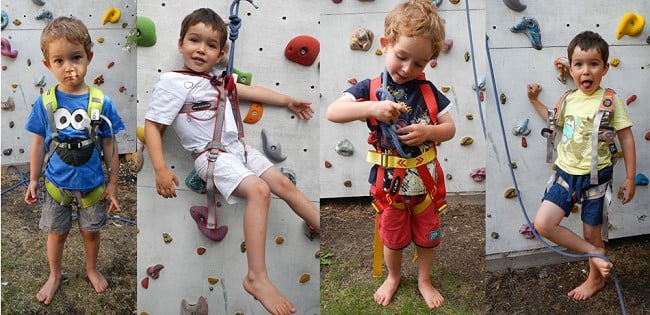
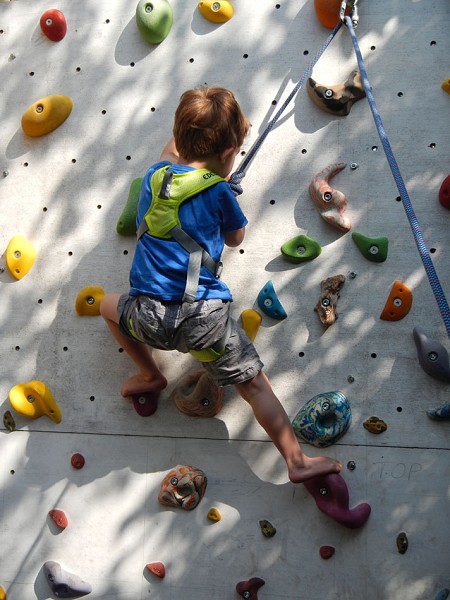
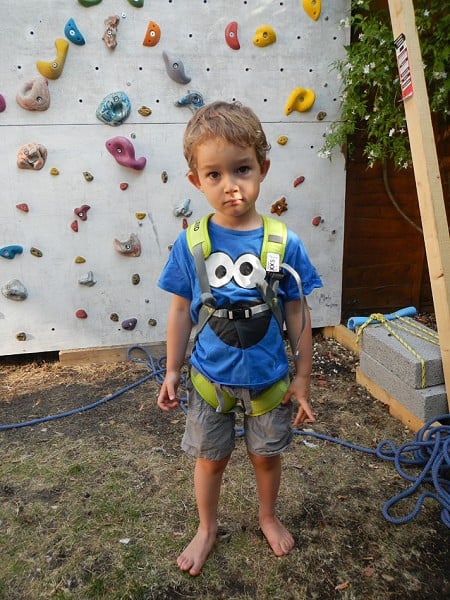
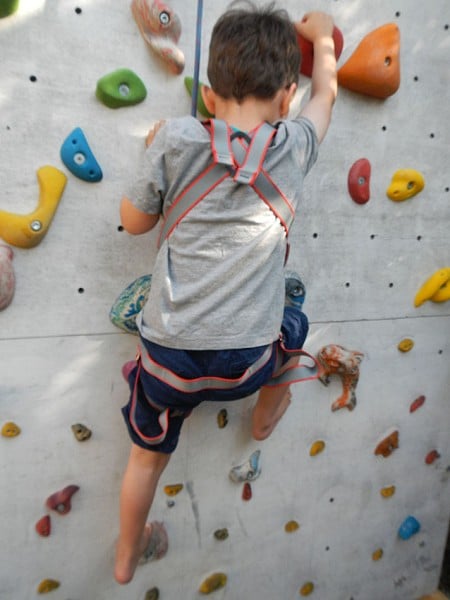
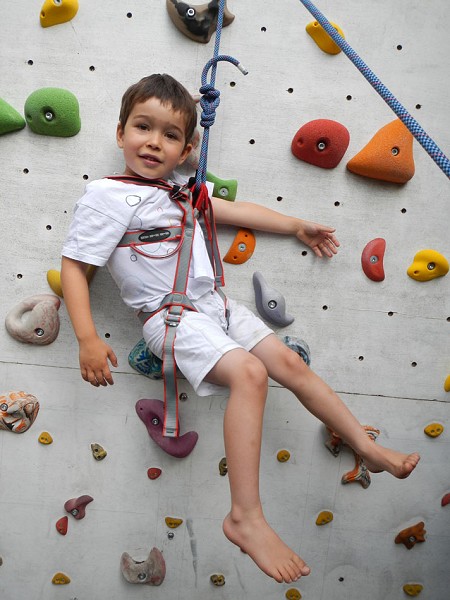
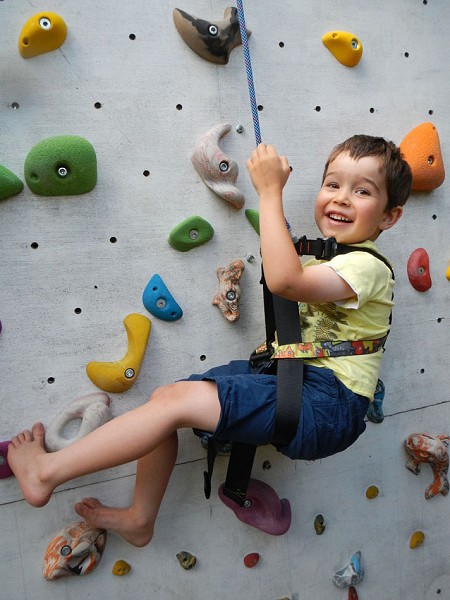
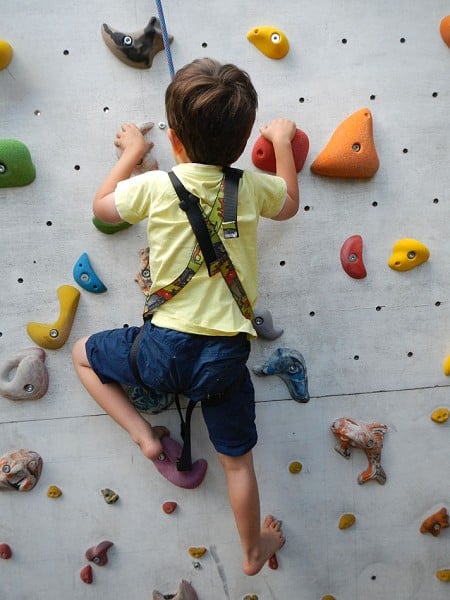
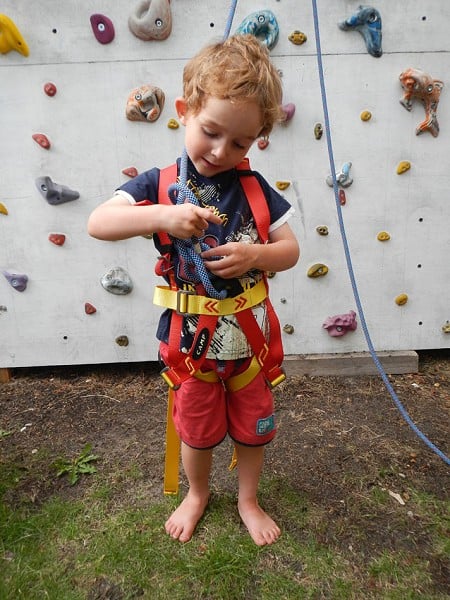
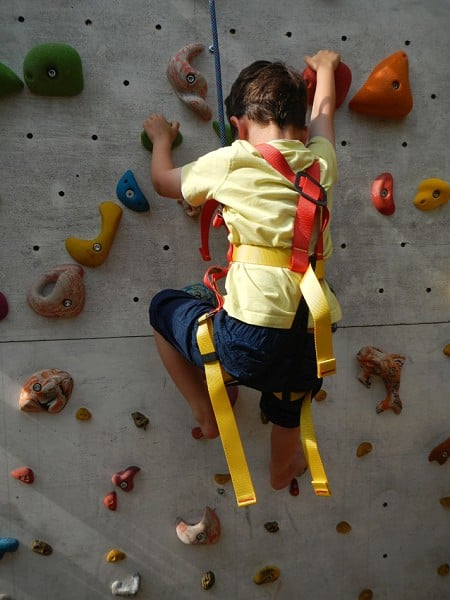
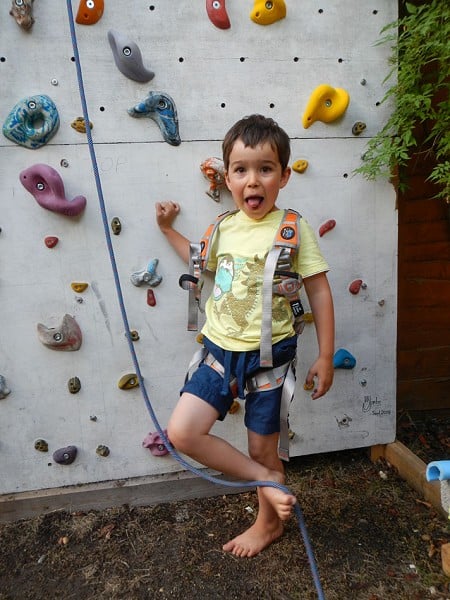
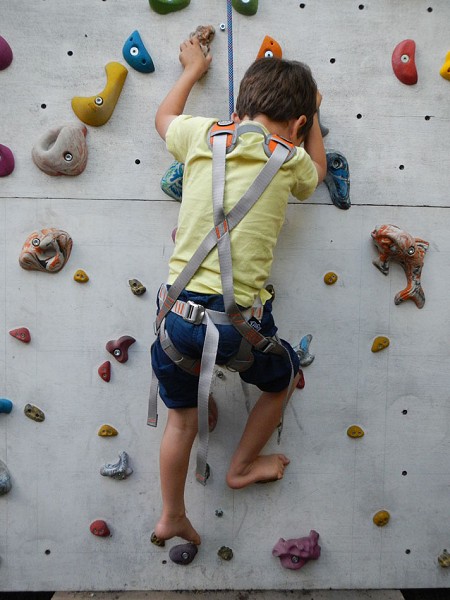
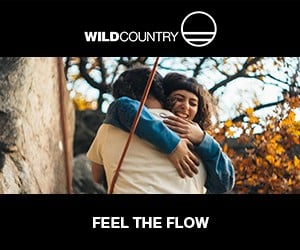

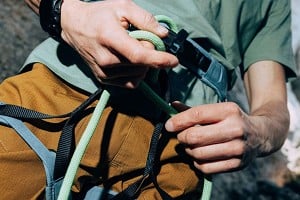
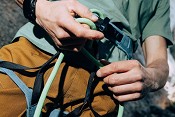
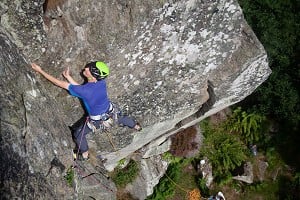
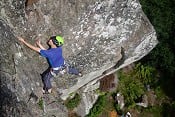
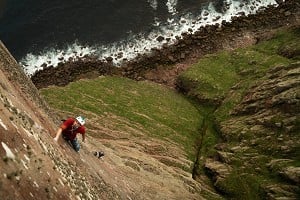
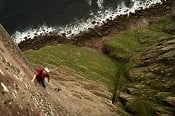
Comments